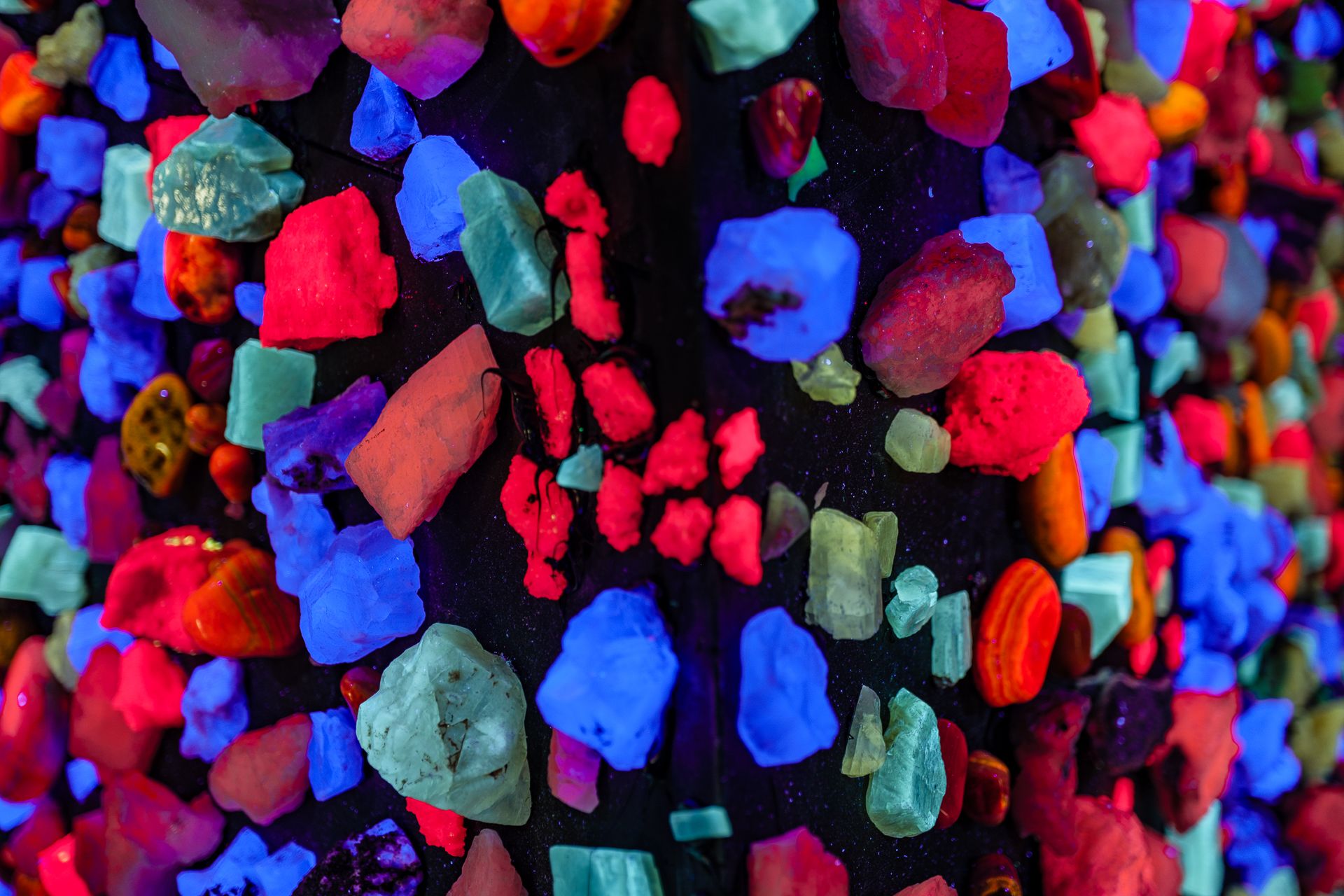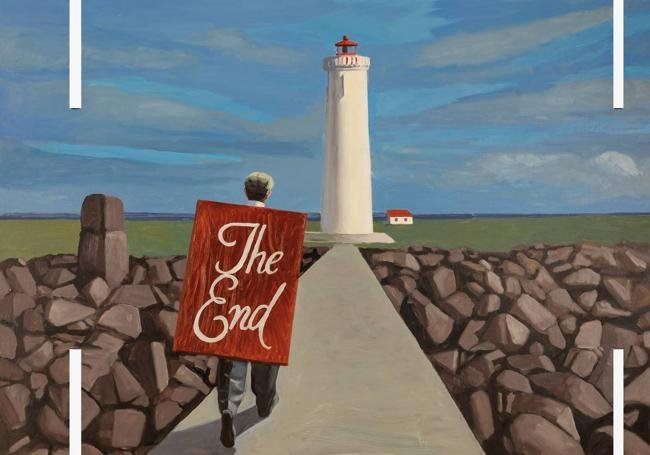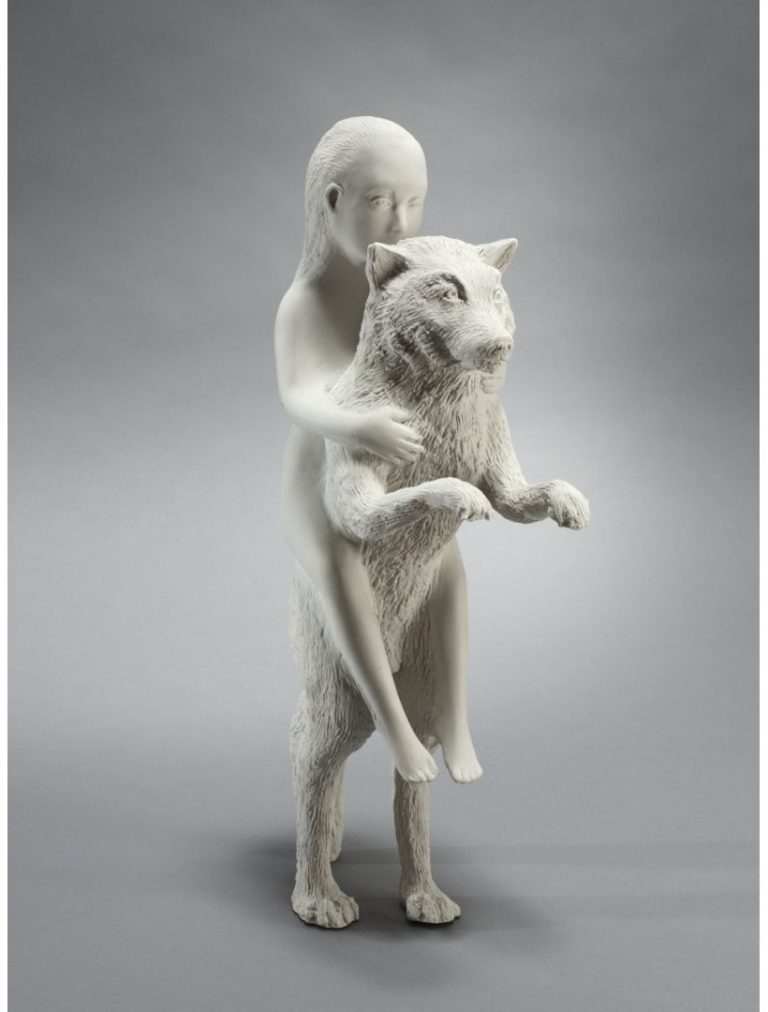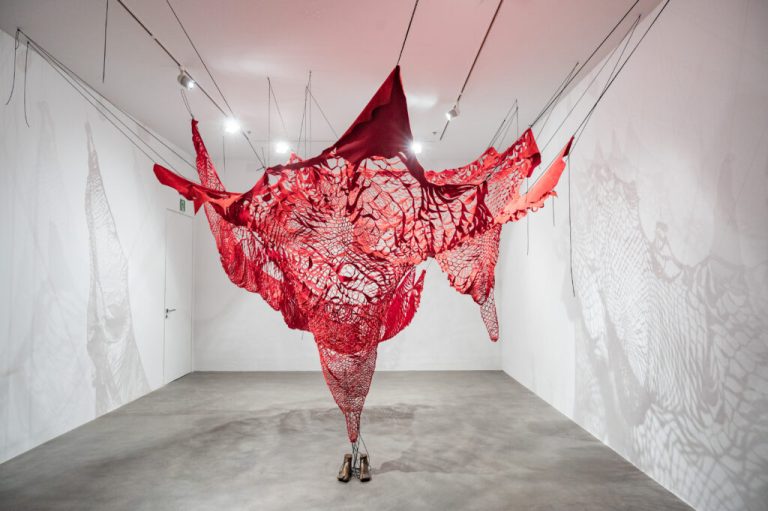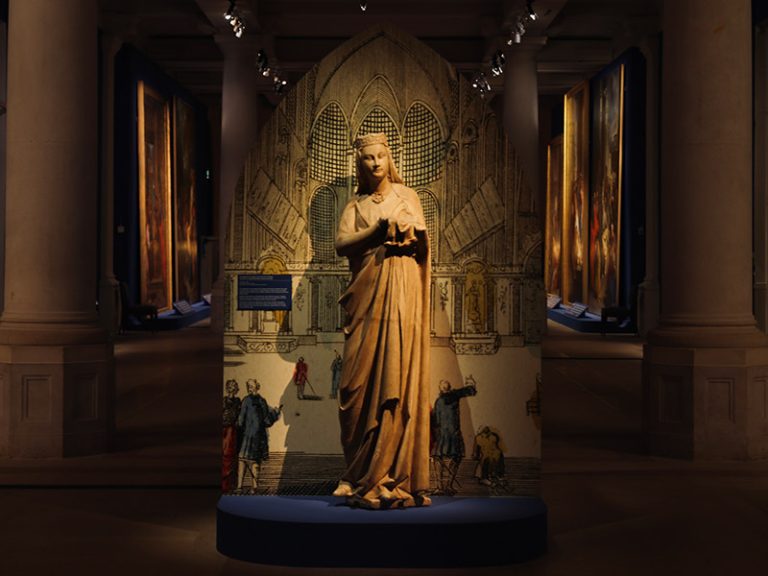Madrid,
A year after donating thirty of her works to the Reina Sofía Museum (with the commitment to, later, do the same with the rest of her production), Eva Lootz, born in Austria in 1940 and settled in Spain since her youth, presents in the Sala Alcalá 31 of the Community of Madrid an exhibition of his recent work in which he once again gives an account of his interest in the disappearances, uncertainties and threats that hover over our heads in relation to the climate, languages, face of the cities, the traditional trades and everything that was once considered solid, in the cosmic and pedestrian terrain.
The exhibition, curated by Claudia Rodríguez-Ponga, opens with a quote from Cézanne (If you still want to see something, hurry up, everything is disappearing), which he probably formulated from his desire to capture volatile atmospheres and lights, but which serves Lootz to accurately condense the purpose of this project and of his work as a whole: to draw our attention to the value and fragility of natural spaces and cultures that gave and shape social communities and about the need to appreciate and preserve them when there is still time.
The exhibition is divided, vertically, into two very different areas corresponding to the ground floor and the upper floor of the Antonio Palacios building; The first could be interpreted as the interior of a ship (in any case, as a dark underground space, cave, mine or mausoleum) and the second, as its deck, already under the usual lighting conditions. At the beginning of our tour we will see, thanks to the use of ultraviolet light common to this entire area, which allows us to see beyond what the eye can see, frescoes that contain the names of Latin American individuals who were murdered for defending their lands or their populations against multinational companies that exploited the environments where they resided; Lootz wants to pay tribute to them.
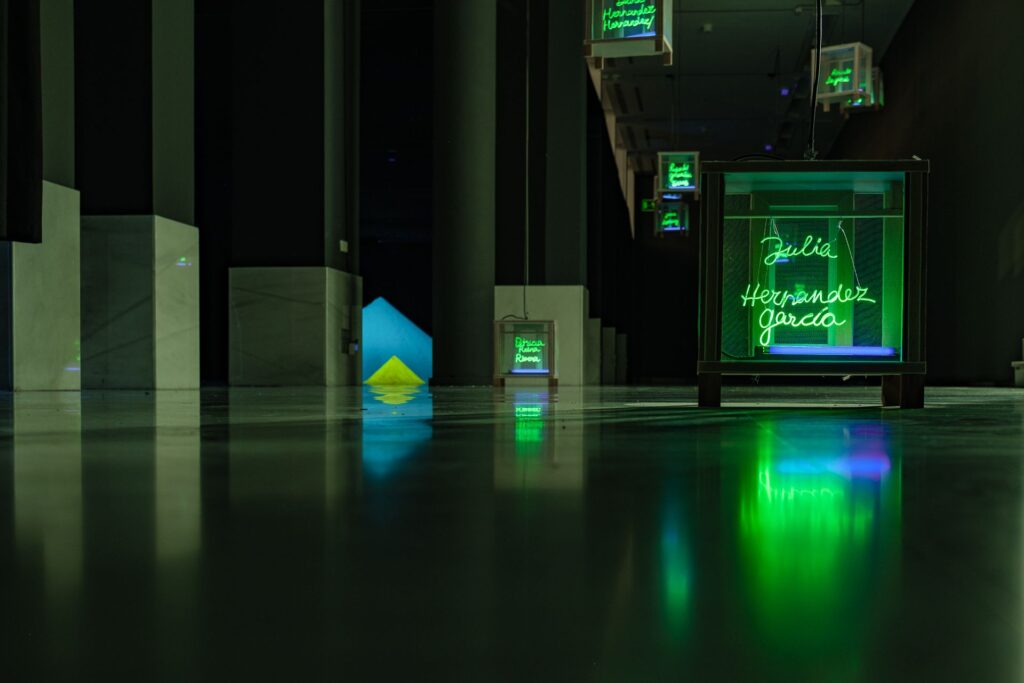
In the central space, various installation pieces refer to his treatment of the concept of resonance, closely linked to light, the lightest and most weightless thing on Earth in the artist's words, and its wave character (it is inevitable to remember at this point Goethe's maxim that color is turbulent light). In physics, this phenomenon, resonance, is defined as the oscillation where frequencies act on each other and are self-reinforcing; in other words, as the increase in amplitude that occurs when the frequency of a periodically applied force is equal to or close to the natural frequency of the system in which it acts. Fundamental in the fields of mechanics, acoustics or electronics, this author has sought to transfer it to fields that are not necessarily scientific, those linked to the subtle or invisible registers of experience.
Lootz says that If art becomes more than a financial value, something different from a luxury industry item, it is because it is capable of resonating within what I am going to call a niche; and this resonance has an unprecedented power of transmission. It reaches the most intimate part of the person. This niche can be the passion of someone who runs a museum, the constant energy of an artist, the empathy that exists between members of a film crew, the viewer who knows what is at stake, or the hunger for music. of the audience at a concert. This capacity for resonance would therefore transcend the evocative power of a work of art; it would have more to do with its disturbing and transformative potential, which necessarily requires, in those who contemplate it but also in those who create it, a position of receptivity, more relevant even in this process than knowledge. This receptivity has a lot of mystery, but equally certainty: the Austrian conceives it as a kind of full intuition by which we grasp something that we do not know and yet, in advance, we already know.
Under the aforementioned ultraviolet light, which reveals faces and nuances of materials that are impossible to see under any other form of lighting, we will contemplate a small mountain of turmeric, a dye of Indian origin that, in its beautiful simplicity, offers gastronomic, cosmetic and medicinal possibilities, and a higher pyramid of minerals that project all colors. By plunging this ground floor of Alcalá 31 into darkness, Lootz has also sought to emphasize that the eye is capable of adapting to very different light conditions: that in this, and in many other areas in a metaphorical way, it is possible to adapt our gaze to new circumstances.
If art becomes more than a financial value, something different than a luxury industry item, it is because it is capable of resonating within what I am going to call a niche; and this resonance has an unprecedented power of transmission. It reaches the most intimate part of the person.
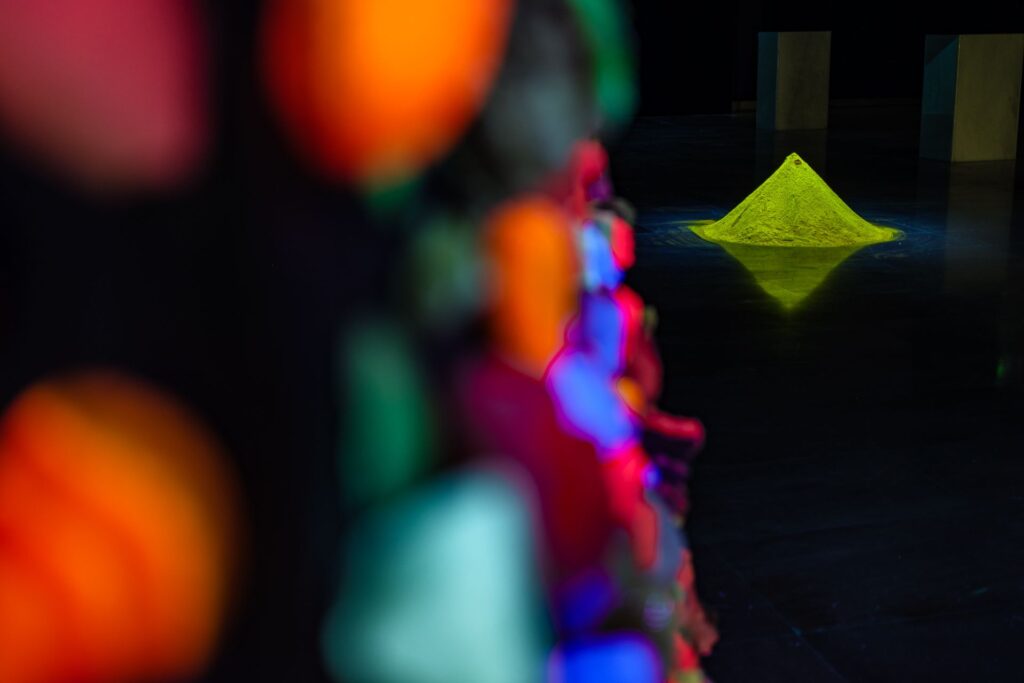
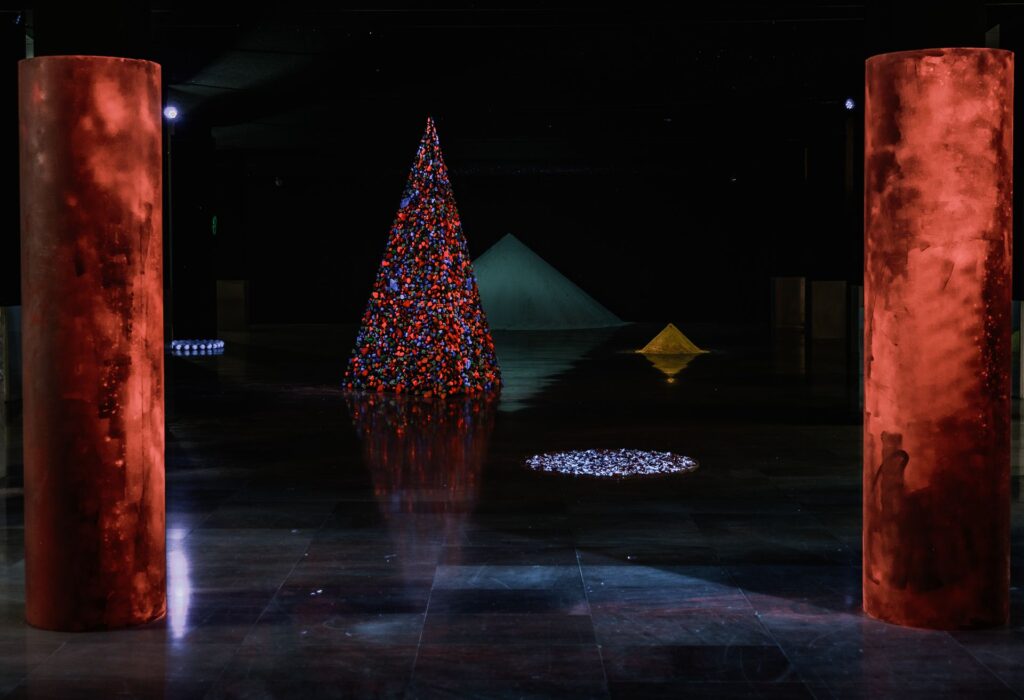
Two columns made with powdered blood will also come to meet us, an installation made with bone powder, wood and fabric and talking columns (we will recognize them by their ears) in which, as we approach, we will hear the voice of the artist reminding us the need to appreciate what is close and value the time of life, which It's always short even if you get old. His messages are something of a balm against depression and are derived from his belief that Everything alive contains an inexhaustible potential for positivity. and it is up to us to decide what we do with it.
In his approach to these transcendental themes, Lootz combines lyricism with a certain physical perspective: he has been interested in the latest studies on alternative states of matter and recommends reading the book to anyone curious. The new alliance: Metamorphosis of science, by Ilya Prigogine and Isabelle Stengers.

The first floor of this Madrid center is occupied entirely by pieces corresponding to his series drawings that think, which he carried out during confinement. From simplicity and expressiveness, he poured into them constant concerns and new interests derived from this pandemic situation or from the preparation of the exhibition that, in the same year 2020, he presented at the Patio Herreriano Museum and at the Colegio de San Gregorio in Valladolid. . In these works he names some of the languages that have disappeared in Latin America (he considers the end of every language a trauma, as each one constitutes a treasure chest), reminiscent of Aztec or Mapuche poets, heroes of the black revolution in Haiti…, but they also have these compositions, displayed here as tiles of different mosaics, much of them from newspapers, and sometimes they incorporate names of friends, allusions to books read, improvisations , fruit stickers…
In addition to starting from multiple references from the history of Latin America, he poured into these images his love for the methods of Aby Warburg, who read the history of art, not from a linear approach, but paying attention to common gestures and the emotional factor, trying to to overcome its rigid division into closed stages and to deconstruct an iron heritage of understanding of cultural and human phenomena based on dualism, against which Lootz has also wanted to fight; We are referring to those canonical fractures between nature and culture, body and mind, that Descartes proclaimed. In her case, the knots, and their constellations, constitute for her a tool that challenges linearities; They also refer to the notion of thread as a historical materialization of narratives and the importance of that motif, the knot, in Inca culture.
Some quotes in these drawings are worth a careful reading: Every drawing shows something that cannot be seen; There is nothing outside the text, says Derrida… That is, everything can be another way…; It is the feet that read the book of the world; A good artist today finds strategies against obscene visibility; Not by making miniatures the Middle Ages return; Beauty is the effect of the naivety of the viewer who refuses to abandon the belief in the Three Wise Men.; and our favorite, assuming self-criticism: The art world is what prevents art from making the world. Another motto closes the tour, returning to the author's environmental concerns: Water is the future name of thirst.
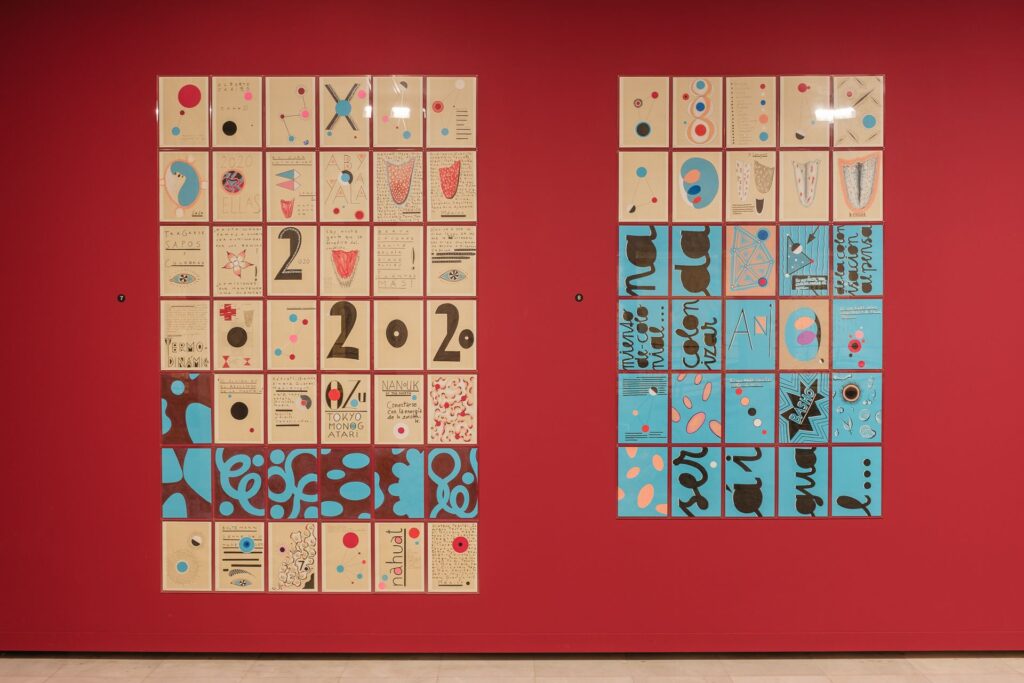
Eva Lootz. “If you still want to see something…”
ALCALÁ ROOM 31
c/ Alcalá, 31
Madrid
From May 8 to July 21, 2024

